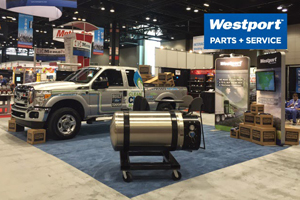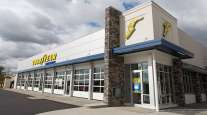Westport Fuel Systems Reports Net Loss, Higher Revenue

Westport Fuel Systems Inc. on Nov. 9 reported a net loss and higher revenue for the third quarter, as the recently merged company announced that it continues to review the business and operations to determine additional synergies and efficiencies.
The net loss of $33.3 million, or 30 cents per share, for the period ended Sept. 30 compared with a net loss of $37.4 million, or 58 cents, year-over-year, the Vancouver, Canada-based company said.
On June 1, Westport Innovations Inc. and Fuel Systems Solutions Inc. merged to create Westport Fuel Systems to focus on the engineering, manufacturing and supply of alternative fuel systems and components.
In the quarter, consolidated revenue climbed to $76.1 million, compared with $22.3 in the 2015 period, mainly due to the addition of Fuel Systems' revenue as a result of the merger, it said.
Approximately $16 million in annual savings have been achieved to date, the company said.
“We have sold non-core assets and improved our working capital position through inventory reduction efforts this quarter,” Ashoka Achuthan, chief financial officer of Westport Fuel Systems, said in a statement.
Also, Cummins Westport Inc., its natural-gas engine manufacturing venture with Columbus, Indiana-based engine maker Cummins Inc., reported engine sales fell 29.9% to 1,643 units, compared with 2,343 in the 2015 period.
The financial results reflected “a decrease in unit sales and higher engineering expense mainly related to new products and compliance costs for upcoming regulations,” it said.
Operating income for the segment was $7.9 million, off 35.2% compared with $12.2 million a year earlier.
Revenue year-over-year dropped 18.1% to $67.5 million, compared with $82.4 million.
Also, operating expenses increased to $14.7 million, compared with $13.4 in the 2015 period.
CWI said it began production in the quarter of the ISL G Near Zero natural gas engine, North America's first commercially available near zero nitrogen oxide midrange engine with exhaust emissions 90% lower than the current Environmental Protection Agency and California Air Resources Board NOx limit.
“The company may receive a revenue boost starting in 2017 from the launch of its HPDI 2.0 solution, along with the benefit of reduced R&D associated with that program; according to management, most of the current R&D, which was $15.8 million in the quarter, was related to HPDI 2.0,” Michael Baudendistel, an analyst with Stifel, Nicolaus & Co., wrote in a note to investors.
HPDI 2.0 is the latest version of its high-pressure, direct-injection technology and a fuel efficient alternative to spark-ignited engines, it said.




